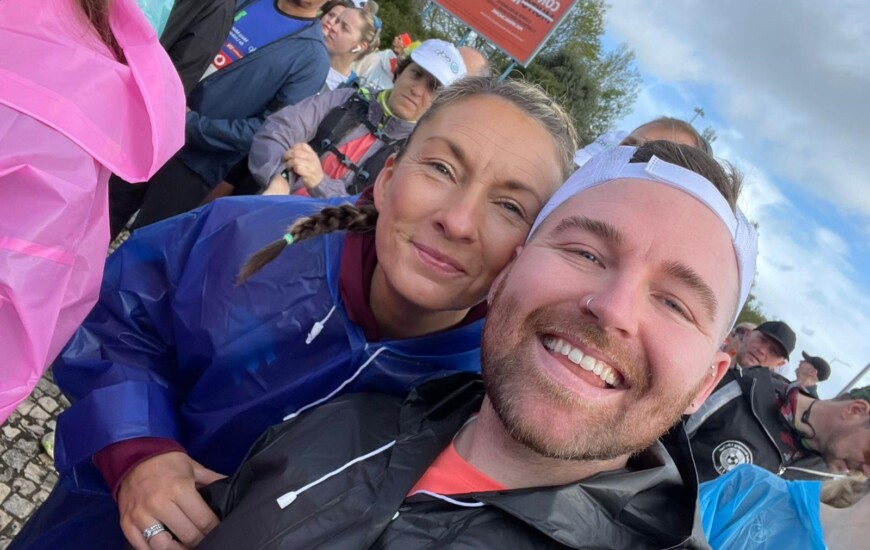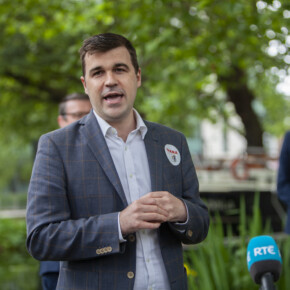Skin cancer survivor shares her story to encourage others to get skin changes checked and to practice sun safety
Padraig Conlon 02 May 2025
A Dublin woman is sharing her experience of being diagnosed with skin cancer to highlight the importance of getting any concerning skin changes checked out.
Jane Murray (46) is one of 11,500 people diagnosed with skin cancer in Ireland every year.
Skin cancer is Ireland’s most common cancer, and the National Cancer Registry of Ireland (NCRI) expects the number of people diagnosed with skin cancer in Ireland to double by 2040.
Jane was diagnosed with a malignant melanoma last February, after her friens and family spent several years urging her to get a mole on her arm checked out.
The mole was removed in November last year, but tests on the mole revealed that Jane had stage two melanoma which led to her diagnosis the following February.
Further tests were done to establish if the cancer had spread, and last April Jane received the news that her cancer had not spread, and she received the all clear.
Jane is sharing her story to encourage people to be ‘Skin Smart’ and to get any concerning skin changes checked out by their GP.
Explaining how her diagnosis came about, Jane said: “I had absolutely no symptoms.
“My friend, Alan, is a nurse and we run together. Since 2020, every time we’d go for a run, he’d tell me that I needed to get a tiny little mole on my arm checked out.
“My son’s girlfriend is a nurse, and she said the same thing, that I should get it checked out.
“It had all the characteristics of a cancerous mole: jagged edges, different borders, and it rose from my skin. It was something I never really noticed, because it was under my triceps.
“When I was on holidays last year, my husband, and my son’s girlfriend, were saying to me that I should get the mole looked at. I got the mole checked in November, mainly out of spite because I wanted them all to stop asking me about it!”
Jane, who regularly used sunbeds in her 20s and described herself as a “sun-worshipper” when she went on holidays, got the mole removed and then received her diagnosis the following year.
Jane added: “I didn’t think the doctor was talking to me when she said the mole was a malignant melanoma.
“She was sitting behind her computer, so I thought she was on the phone to someone else when she said it. Then she moved from behind the computer and looked right at me and I realised she was talking to me. It was completely shocking.”

After this, Jane was referred to a plastic surgeon who took two centimetres around and two centimetres down from where the mole had been, to check if the cancer had spread.
Thankfully, Jane got the all clear last April.
Commenting on the potential outcome if she hadn’t got her mole checked, Jane said: “I asked the surgeon what would’ve happened if I had left the mole, if the people around me hadn’t pushed me to get it checked out.
“He said I would’ve been in a lot of trouble, and that by the time I would’ve been symptomatic, I would’ve been at stage four and there wouldn’t have been much that could have been done for me.
“It’s just not worth it. A tan is really just not worth the risk. I always thought because I had sallow skin and was tanned that that meant I didn’t need high SPF or SPF at all.
“I also never wore SPF when I went running, because I didn’t like the feel of it when sweating, which is really when I should have been wearing it most. You always think skin cancer will never happen to you, but it can.”
Reflecting on her experience, Jane said: “I feel very lucky that there were people in my life who pushed me to get the mole checked out. Don’t feel stupid for getting something small checked – I put it off for so long, but I should’ve done it sooner.
“Protect your skin, wear your SPF, don’t use sunbeds, and get your moles checked. It’s been a long two months, from getting my diagnosis, to having surgery, to being given the all clear. It was like I was floating on air when I was told the cancer was gone – it’s such a huge relief.”
Kevin O’Hagan, Cancer Prevention Manager at the Irish Cancer Society, said: “Nearly nine out of every 10 cases of skin cancer are caused by UV rays from the sun or sunbeds. Sun safety is vital and that means protecting your skin, wherever you are, home or abroad.
“With most Irish people having fair skin, this will burn much quicker at soaring temperatures, and this greatly increases the risk of skin cancer.
“As Jane’s powerful story shows, it’s also important to go to your GP if you notice any skin changes.
“These can be a new or changing mole, a flat red spot, a firm red lump, an ulcer or spot that is tender to the touch or rough and scaly patches.
“Early detection is vital – the sooner skin cancer is diagnosed, the more treatment options there are and the better the chance of cure. We want to ensure that the public are aware of the signs and symptoms of skin cancer and take action by contacting their GP if they notice any symptoms or have any concerns.”
Anyone with questions or concerns about skin cancer, can contact the Irish Cancer Society Support Line on Freephone 1800 200 700 or supportline@irishcancer.ie











